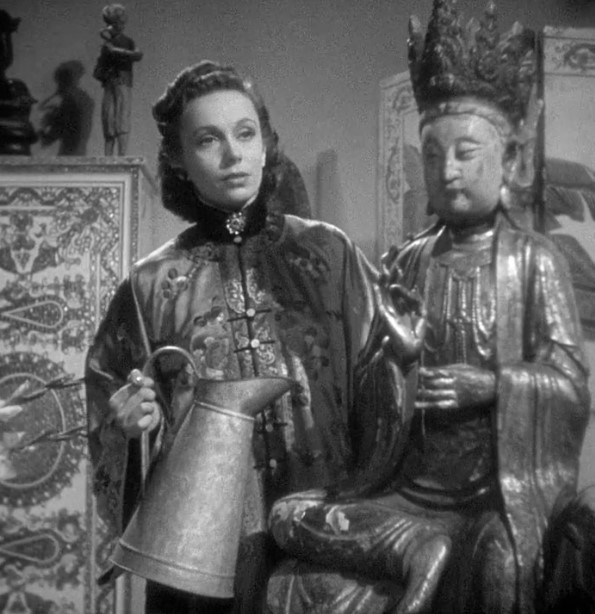The ensemble cast in La Règle Du Jeu (1939) includes many notable minor characters but none of them quite have the seductive and secretive qualities of Geneviève de Marras played by Mila Parély. These qualities are significant and not only build her character but her relationships with the other characters in the cast. This is relevant to the article “Referential Acting and the Ensemble Cast,” written by Ernest Mathijs in “Small Players, Small Parts Dossier” in Screen and discusses the performances of ensemble casts and how they play off each other.
Introduced nine minutes into the film, there can be a lot learned from Geneviève just from her appearance. She is wearing an expensive looking dress, a pearl necklace, and makeup. From this, the audience can tell that she has wealth and high social status and that she uses the former to play into the latter. This relates directly to what Mathijs says in his article when he states that “it is important for someone in an ensemble cast to act the way the audience expects, and to make use of that expectation in their playing with (or off) other cast members,” (90). Geneviève does exactly this, using what the audience has learned about her and playing off it with other characters. This is prominent in her first scene where she is in a room filled with three men playing poker who are also of high wealth and status. During this, she makes sure to make lots of physical contact with the man in the middle, resting her arm on his shoulder and slightly using it to lean on him. While she does this, she makes sure to hold up her cigar and smiles a lot while talking to the men. This combination of body language with her wealth and status helps her play into the audience’s expectation that she is a seductive woman and that she will act accordingly to this. She also uses this in the first scene she shares with Robert de la Chesnaye, a man who she is having an affair with. He wants to end the relationship with her, but she uses her charms on him, eventually convincing him to stay being grateful that he is “a weak man.”
Geneviève also coincides with typage, a term that is described in Mathijs’ article as “types of bodies used for their idiosyncratic and athletic talent to look good in a group. Framed as the inability to like anything other than the same, time and time again, in spite of gestures, movements, or props,” (91). Geneviève can easily be typed as the femme fatale due to her previously mentioned characteristics of beauty, seduction, and mystery due to her nature as a secret lover. Viewers can also recognize and type these kinds of minor characters on their own, comparing them to other characters in said categories further fueling their expectations for them to act a certain way. This doesn’t mean Geneviève is a bland character, though. She still has her wants, needs, and motivations such as a real relationship with Chesnaye and the pain that comes with being kept a secret.
Mathijis, Ernest. “Referential Acting and the Ensemble Cast.” Screen, vol. 52, no. 1, 2011, pp. 89-96. https://doi.org/10.1093/screen/hjq063
La Règle Du Jeu (1939).

Provide Feedback